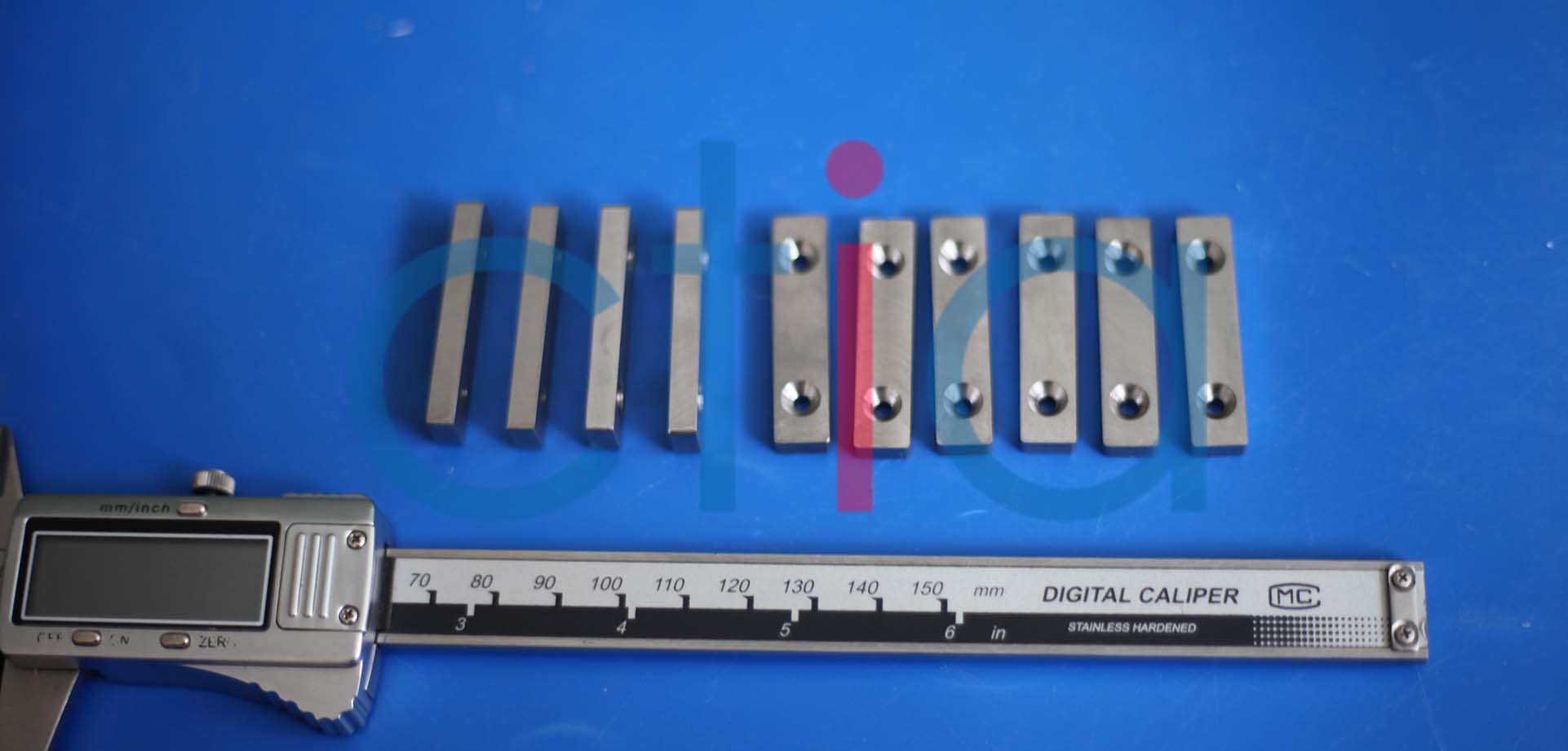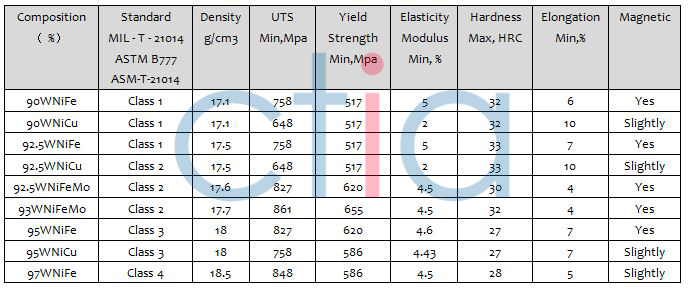I. Definition & Characteristics
Tungsten alloy machined parts are custom components fabricated from high-density tungsten-based alloys such as W-Ni-Fe or W-Ni-Cu, using precision machining processes. Their key characteristics include:
- Extremely High Density: 17.0–18.5 g/cm³, allowing for compact, high-mass counterweights and kinetic energy control.
- Excellent Dimensional Stability: Minimal deformation under high temperature or mechanical stress; low thermal expansion coefficient.
- Good Machinability: Suitable for turning, milling, grinding, drilling, tapping, and other conventional machining operations.
- Customizable Complex Structures: Supports high-precision machining of both small precision components and large load-bearing parts.
- High Wear and Corrosion Resistance: Ideal for harsh operational environments.
II.Common Types of Machined Parts
- Aerospace Counterweight Components
- Examples: Satellite module counterweights, inertia flywheels, missile center-of-gravity balancing blocks.
- Defense and Military Structural Parts
- Examples: Armor-piercing cores, tail fins, fire-control rotary parts, shock-absorbing blocks.
- Medical Radiation Shielding Parts
- Examples: CT/X-ray protection modules, isotope carriers, radiation shielding containers.
- Electronic Thermal Management Components
- Examples: Chip bases, heat sinks, precision brackets, and connector parts.
- Oil & Geological Exploration Components
- Examples: Logging tool counterweights, pressure-resistant probe housings, core components for drill bits.
- Molds & Mechanical Accessories
- Examples: High-inertia punches, electrode blocks, wear-resistant mold inserts, specialized fixtures.
III. Machining Capabilities
- Size Range: Capable of producing both micro-sized components and large complex shapes.
- Tolerance Grade: Precision tolerances up to ±0.01 mm or tighter upon request.
- Surface Treatment Options: Polishing, sandblasting, plating, passivation, etc.
- Complex Geometry: Supports hollowing, slots, threading, non-standard holes, and intricate structures.
- Drawing/Sample Customization: Fully integrated machining service based on customer drawings or samples.
IV. Technical Requirements & Considerations
- Material Properties Affect Machining: Tungsten alloys are hard and thermally conductive; carbide tools and low-speed, high-feed machining are recommended.
- Residual Stress Control: Proper heat treatment and machining path design help minimize internal stress and improve dimensional accuracy.
- Challenging Welding & Assembly: Due to poor weldability, mechanical fastening is typically used for assembly.
- Environmental & Safety Compliance: Tungsten alloys are non-radioactive and eco-friendly, making them suitable alternatives to traditional thorium-containing materials.
V. Application Examples
- Inertial Block for Aerospace: Φ45×30 mm, density 18.5 g/cm³, precision ±0.01 mm, surface roughness Ra 0.8.
- Medical Shielding Box: Internally machined cavity with threading, complex structure, high sealing performance.
- Projectile Core Component: Tapered composite structure with reinforced front tip for excellent penetration performance.
VI. Support Services
- Drawing conversion and design optimization
- Raw material and customer-supplied part machining
- Inspection reports (density, hardness, ultrasonic, dimensional)
- Prototyping and batch production services
© Copyright
The copyright of the article belongs to CTIA, please do not reprint without permission.
THE END
Like and Share













